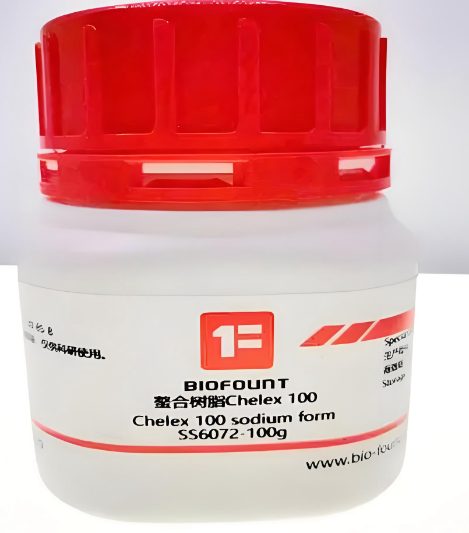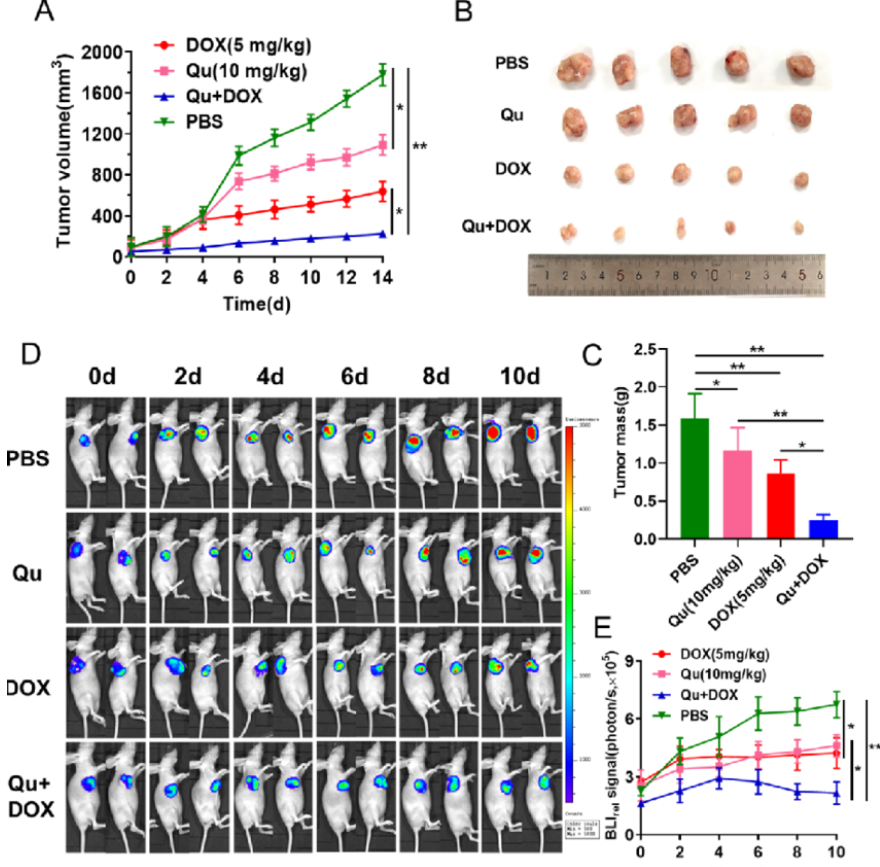
-
PFK-158
- names:
PFK-158
- CAS号:
1462249-75-7
MDL Number: MFCD28386154 - MF(分子式): C18H11F3N2O MW(分子量): 328.29
- EINECS: Reaxys Number:
- Pubchem ID:71730058 Brand:BIOFOUNT
| 货品编码 | 规格 | 纯度 | 价格 (¥) | 现价(¥) | 特价(¥) | 库存描述 | 数量 | 总计 (¥) |
|---|---|---|---|---|---|---|---|---|
| YZM001265-10mg | 10mg | 98.85% | ¥ 1215.00 | ¥ 1215.00 | 2-3天 | ¥ 0.00 | ||
| YZM001265-5mg | 5mg | 98.85% | ¥ 780.00 | ¥ 780.00 | 2-3天 | ¥ 0.00 |
| 中文别名 | PFK-158(1462249-75-7); PFK158;PFK 158;PFK158;ACTPFK158;(2E)-1-(4-吡啶基)-3-[7-(三氟甲基)-2-喹啉基]-2-丙烯-1-酮;PFKFB3抑制剂(PFK-158); |
| 英文别名 | PFK-158(1462249-75-7);PFK158; PFK 158; PFK158; ACTPFK158;:PFK-158;PFK-158, ACT-PFK-158;(2E)-1-(4-Pyridinyl)-3-[7-(trifluoromethyl)-2-quinolinyl]-2-propen-1-one;PFK-158;PFK 158;PFK-158 free base; |
| CAS号 | 1462249-75-7 |
| Inchi | InChI=1S/C18H11F3N2O/c19-18(20,21)14-3-1-12-2-4-15(23-16(12)11-14)5-6-17(24)13-7-9-22-10-8-13/h1-11H/b6-5+ |
| InchiKey | IAJOMYABKVAZCN-AATRIKPKSA-N |
| 分子式 Formula | C18H11F3N2O |
| 分子量 Molecular Weight | 328.29 |
| 溶解度Solubility | 生物体外In Vitro:DMSO溶解度≥ 30 mg/mL(91.38 mM)H2O< 0.1 mg/mL(insoluble)*"≥" means soluble可溶, but saturation unknown溶解度未知. |
| 性状 | 固体粉末,Power |
| 储藏条件 Storage conditions | -20°C 3 years年 4°C 2 years年 / In solvent溶液中:-80°C 6 months月 -20°C 1 month月 |
PFK-158(1462249-75-7,ACT-PFK-158)实验注意事项:
1.实验前需戴好防护眼镜,穿戴防护服和口罩,佩戴手套,避免与皮肤接触。
2.实验过程中如遇到有毒或者刺激性物质及有害物质产生,必要时实验操作需要手套箱内完成以免对实验人员造成伤害
3.实验后产生的废弃物需分类存储,并交于专业生物废气物处理公司处理,以免造成环境污染Experimental considerations:
1. Wear protective glasses, protective clothing and masks, gloves, and avoid contact with the skin during the experiment.
2. The waste generated after the experiment needs to be stored separately, and handed over to a professional biological waste gas treatment company to avoid environmental pollution.
Tags:PFK-158试剂,PFK-158杂质,PFK-158中间体,PFK-158密度,PFK-158溶解度,PFK-158旋光度,PFK-158合成,PFK-158闪点,PFK-158熔点,PFK-158购买,

| 产品说明 | PFK-158(1462249-75-7,ACT-PFK-158)是一种有效且选择性的PFKFB3抑制剂,目前正在I期研究中对晚期实体恶性肿瘤患者进行研究. |
| Introduction | PFK-158(1462249-75-7,ACT-PFK-158)is a potent and selective inhibitor of PFKFB3 that is currently being investigated in a phase I study in patients with advanced solid malignancies. |
| Application1 | |
| Application2 | |
| Application3 |
1、PFK-158是一种有效且选择性的PFKFB3抑制剂,目前正在I期研究中对晚期实体恶性肿瘤患者进行研究。;目标:PFKFB3;体外:PFK-158是第一种在癌症患者中进行临床试验的6-磷酸果糖-2-激酶/果糖-2,6-双磷酸酶3(PFKFB3)抑制剂。PFK-158是一种小分子治疗性候选药物,可在人类临床试验中从未检测到的可灭活新型癌症代谢靶标的物质。PFK-158不仅是一流的抗癌药物,而且还是第一个通过抑制PFKFB3靶向葡萄糖代谢的药物。PFK-158是重组PFKFB3的纳摩尔抑制剂。PFK-158在癌细胞中抑制PFKFB3活性和糖酵解。体内:PFK158在大鼠和狗中具有良好的耐受性,可产生可接受的临床前治疗指数。PFK158在人源性肿瘤的多个临床前小鼠模型和同系小鼠模型中非常有效。
2、PFK-158也称为ACT-PFK-158,是6-磷酸果糖-2-激酶/果糖-2,6-双磷酸酶(PFK-2 / FBPase)同工型3(PFKFB3)和3-( 3-吡啶基)-1- [4-吡啶基] -2-丙烯-1-酮(3PO),具有潜在的抗肿瘤活性。给药后,PFKFB3抑制剂PFK-158结合并抑制PFKFB3的活性,从而抑制癌细胞中的糖酵解途径和葡萄糖摄取。与正常的健康细胞相比,这可以防止大分子的产生和能量的产生,从而导致癌细胞中细胞增殖的增强。剥夺癌细胞的营养和能量会导致癌细胞生长受到抑制。PFKFB3,一种催化果糖6-磷酸转化为果糖2,6-双磷酸的酶,在人类癌细胞中高表达和活跃;它在增加癌细胞的糖酵解通量和增殖中起关键作用。
| 警示图 | |
| 危险性 | warning |
| 危险性警示 | Not available |
| 安全声明 | H303吞入可能有害+H313皮肤接触可能有害+H2413吸入可能对身体有害 |
| 安全防护 | P264处理后彻底清洗+P280戴防护手套/穿防护服/戴防护眼罩/戴防护面具+P305如果进入眼睛+P351用水小心冲洗几分钟+P338取出隐形眼镜(如果有)并且易于操作,继续冲洗+P337如果眼睛刺激持续+P2393获得医疗建议/护理 |
| 备注 | 实验过程中防止吸入、食入,做好安全防护 |
| Mondal S, et al. Therapeutic targeting of PFKFB3 with a novel glycolytic inhibitor PFK158 promotes lipophagy and chemosensitivity in gynecologic cancers. Int J Cancer. 2019 Jan 1;144(1):178-189. |
| Zhang Y, et al. Synergistic Effect of Colistin Combined with PFK-158 against Colistin-Resistant Enterobacteriaceae. Antimicrob Agents Chemother. 2019 Jun 24;63(7). pii: e00271-19. |
| Pooran Chand, et al. Pfkfb3 inhibitor and methods of use as an anti-cancer therapeutic. WO2013148228A1. |
1、Therapeutic targeting of PFKFB3 with a novel glycolytic inhibitor PFK158 promotes lipophagy and chemosensitivity in gynecologic cancers
Susmita Mondal 1 2, Debarshi Roy 1, Sayantani Sarkar Bhattacharya 1, Ling Jin 1, Deokbeom Jung 1, Song Zhang 3, Eleftheria Kalogera 4, Julie Staub 1, Yaxian Wang 1, Wen Xuyang 1, Ashwani Khurana 1, Jeremey Chien 5, Sucheta Telang 6, Jason Chesney 6, Gilles Tapolsky 7, Dzeja Petras 3, Viji Shridhar
Abstract Metabolic alterations are increasingly recognized as important novel anti-cancer targets. Among several regulators of metabolic alterations, fructose 2,6 bisphosphate (F2,6BP) is a critical glycolytic regulator. Inhibition of the active form of PFKFB3ser461 using a novel inhibitor, PFK158 resulted in reduced glucose uptake, ATP production, lactate release as well as induction of apoptosis in gynecologic cancer cells. Moreover, we found that PFK158 synergizes with carboplatin (CBPt) and paclitaxel (PTX) in the chemoresistant cell lines, C13 and HeyA8MDR but not in their chemosensitive counterparts, OV2008 and HeyA8, respectively. We determined that PFK158-induced autophagic flux leads to lipophagy resulting in the downregulation of cPLA2, a lipid droplet (LD) associated protein. Immunofluorescence and co-immunoprecipitation revealed colocalization of p62/SQSTM1 with cPLA2 in HeyA8MDR cells uncovering a novel pathway for the breakdown of LDs promoted by PFK158. Interestingly, treating the cells with the autophagic inhibitor bafilomycin A reversed the PFK158-mediated synergy and lipophagy in chemoresistant cells. Finally, in a highly metastatic PTX-resistant in vivo ovarian mouse model, a combination of PFK158 with CBPt significantly reduced tumor weight and ascites and reduced LDs in tumor tissue as seen by immunofluorescence and transmission electron microscopy compared to untreated mice. Since the majority of cancer patients will eventually recur and develop chemoresistance, our results suggest that PFK158 in combination with standard chemotherapy may have a direct clinical role in the treatment of recurrent cancer.
2、PFKFB3 inhibition reprograms malignant pleural mesothelioma to nutrient stress-induced macropinocytosis and ER stress as independent binary adaptive responses
Sayantani Sarkar Bhattacharya 1 2, Prabhu Thirusangu 1, Ling Jin 1, Debarshi Roy 1, Deokbeom Jung 1, Yinan Xiao 1, Julie Staub 1, Bhaskar Roy 3, Julian R Molina 4, Viji Shridhar
Abstract The metabolic signatures of cancer cells are often associated with elevated glycolysis. Pharmacological (PFK158 treatment) and genetic inhibition of 6-phosphofructo-2-kinase/fructose-2,6-biphosphatase 3 (PFKFB3), a critical control point in the glycolytic pathway, decreases glucose uptake, ATP production, and lactate dehydrogenase activity and arrests malignant pleural mesothelioma (MPM) cells in the G0/G1 phase to induce cell death. To overcome this nutrient stress, inhibition of PFKFB3 activity led to an escalation in endoplasmic reticulum (ER) activity and aggravated ER stress mostly by upregulating BiP and GADD153 expression and activation of the endocytic Rac1-Rab5-Rab7 pathway resulting in a unique form of cell death called "methuosis" in both the sarcomatoid (H28) and epithelioid (EMMeso) cells. Transmission electron microscopy (TEM) analysis showed the formation of nascent macropinocytotic vesicles, which rapidly coalesced to form large vacuoles with compromised lysosomal function. Both immunofluorescence microscopy and co-immunoprecipitation analyses revealed that upon PFKFB3 inhibition, two crucial biomolecules of each pathway, Rac1 and Calnexin interact with each other. Finally, PFK158 alone and in combination with carboplatin-inhibited tumorigenesis of EMMeso xenografts in vivo. Since most cancer cells exhibit an increased glycolytic rate, these results provide evidence for PFK158, in combination with standard chemotherapy, may have a potential in the treatment of MPM.
3、Synergistic Effect of Colistin Combined with PFK-158 against Colistin-Resistant Enterobacteriaceae
Youwen Zhang 1, Xiukun Wang 1, Xue Li 1, Limin Dong 1, Xinxin Hu 1, Tongying Nie 1, Yun Lu 1, Xi Lu 1, Jing Pang 1, Guoqing Li 1, Xinyi Yang 1, Congran Li 1, Xuefu You
Abstract As increasing numbers of colistin-resistant bacteria emerge, new therapies are urgently needed to treat infections caused by these pathogens. The discovery of new combination therapies is one important way to solve such problems. Here, we report that the antitumor drug PFK-158 and its analogs PFK-015 and 3PO can exert synergistic effects with colistin against colistin-resistant Enterobacteriaceae, including mcr-1-positive or high-level-colistin-resistant (HLCR) isolates, as shown by a checkerboard assay. The results of a time-kill assay revealed that colistin combined with PFK-158 continuously eliminated colistin-resistant Escherichia coli 13-43, Klebsiella pneumoniae H04, and Enterobacter cloacae D01 in 24 h. Images from scanning electron microscopy (SEM) at 5 h postinoculation confirmed the killing effect of the combination. Finally, in vivo treatment showed that PFK-158 had a better synergistic effect than its analogs. Compared to the corresponding rates after colistin monotherapy, the survival rates of systemically infected mice were significantly increased 30% or 60% when the mice received an intravenous injection of colistin in combination with 15 mg/kg of body weight PFK-158. These results have important implications for repurposing PFK-158 to combat colistin resistance.
- 相关产品
-
< >
- 推荐产品
-
< >
- 最新产品
-
< >
新闻

怎么做细胞爬片免疫组化染色实验
细胞爬片免疫组化染色,是通过细胞爬片是让玻片浸在细胞培养基内,细胞在玻片上生长,主要用于组织学,免疫组织化学...
2020/7/20 22:04:33

提取病毒RNA的实验方法
提取病毒RNA方法分别有:异硫氰酸胍的提取病毒RNA方法、TRIzol LS提取法、Trizol法提取法等等...
2020/7/22 20:29:26

chelex 100树脂国产替代之路-BIOFOUNT范德生物
Chelex 100螯合离子交换树脂对铜、铁和其他重金属?的偏好显著高于对钠、钾等一价阳离子的偏好。它对二价...
2025/11/4 14:22:46

9月开学季——助研新学期 范德送好礼
2025/8/28 15:30:55

Waxfilm 实验室封口膜:技术与国际市场的双重突破
在实验室耗材领域,封口膜是保障实验准确性与稳定性的关键产品之一。近年来,Waxfilm?实验室封口膜凭借其卓...
2025/5/13 13:03:40

Waxfilm实验室封口膜的5大突破
Waxfilm实验室封口膜作为生物功能膜领域的国产技术突破和品牌突破,是生物领域中国技术发展的缩影。
2025/5/6 17:02:07

各种微流控芯片键合方法的优缺点
微流控芯片键合:目前主要有激光焊接、热压键合、胶键合、超音波焊接,每种方法都有各自的优缺点。本文主要介绍聚酯...
2023/7/28 10:43:09

新一代微流控键合解决方案
微流控键合解决方案:微流控芯片制造的一个重要环节,也是最容易被忽视的--芯片键合。其中一个重要因素是:微流控...
2023/7/27 12:44:28

荧光素钾盐使用说明
D-荧光素钾盐(K+)设计用于体外和体内生物发光测定。D-荧光素的质量和纯度对于获得良好和可重复的结果至关重...
2023/7/20 11:05:11

如何选BSA(牛血清白蛋白)
如何选BSA(牛血清白蛋白):牛血清白蛋白(BSA)有多种形式,如何选择适合自己的牛血清白蛋白(BSA)是一...
2023/2/14 13:09:18




 购物车
购物车 



